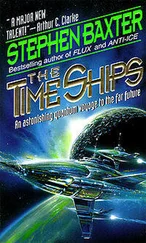Perhaps the most single dramatic moment in the astonishing saga of contact and conquest that followed was the encounter in the Peruvian highlands between the Inca emperor Atahuallpa and the Spanish conquistador Francisco Pizarro, in November 1532, just forty years after Columbus. Atahuallpa ruled the most populous and advanced state in the New World; he had millions of subjects and an army tens of thousands strong. Pizarro led less than two hundred Spaniards. Within minutes of their encounter, Pizarro had captured Atahuallpa. And in a subsequent battle, the Spaniards, with no losses, defeated a native army hundreds of times more numerous, killing thousands. In mere decades the Inca empire had collapsed.
The vast numerical superiority of the Inca meant nothing in the face of the Spaniards’ technological advantage. The Spaniards were a gunpowder culture facing essentially a stone age civilisation. Their steel weapons slashed through the thin armour of the Inca. And the Spaniards’ use of hourses terrified their enemy. As the horse had long been extinct in the Americas, when faced with cavalry charges the Inca did not even understand what they were seeing (remember Captain Cook’s ship and the islanders). Worst of all, in subsequent decades the “herd diseases” like smallpox that the Europeans inadvertently imported from home caused a huge implosion of the native populations.
This basic pattern, of the overwhelming advantage afforded by superior technology, and the leveraging of that advantage into conquest and exploitation, appears to be a common theme of human history. It goes on today. James Cameron intended Avatar as, in part, a cautionary tale about the consequences of contact, colonialism and exploitation. Cameron and some of the cast of Avatar visited the Xingu people of Brazil, who live in a part of Amazonia likely to be affected by the multi-billion-dollar Belo Monte hydroelectric dam project. Cameron calls this a “real-life Avatar confrontation… in progress.”
In the past it has even happened to “us” in the western world. Britain was overwhelmed when the Romans arrived, with their superior army discipline, road-building and literacy-based communications. For all the supposed advantages of Roman civilisation that followed—and Britain’s subsequent history is unimaginable without the Roman intervention—it wasn’t a comfortable process to live through, as Queen Boudicca (Boadicea) of the Iceni nation demonstrated in her bloody but futile revolt a generation after the Romans landed.
If it happened to us before, could it happen again in the future? By the end of the nineteenth century one thoughtful witness, H. G. Wells, disturbed by the plight of peoples like the Tasmanians who appeared to have been entirely exterminated during European colonisation, wondered how it would be if humans, specifically the Victorian-era imperial British, were ever on the receiving end. In The War of the Worlds , British army guns facing the Martian heat ray are “bows and arrows against the lightning”—a phrase evocative of the battle scenes of Avatar .
Today some like to imagine, as in Carl Sagan’s Contact , that if the aliens come we will receive wisdom from the stars: an Encyclopaedia Galactica, a cultural adrenaline boost that will raise our society to new levels. But others follow Wells in imagining harsher possibilities. Physicist Stephen Hawking recently said (in a Discovery Channel documentary called Stephen Hawking’s Universe , aired on 9 May 2010), “I imagine they exist in massive ships, having used up all the resources of their home planet. If aliens ever visit us, the outcome could be much as when Christopher Columbus first landed in America, which didn’t turn out very well for the Native Americans.” Which sounds like an Avatar scenario in reverse.
Today there is a ferocious debate going on in the world of SETI, the search for extraterrestrial intelligence, about the wisdom, not just of passively listening for signals from space aliens, but of signalling to them. This is known as “active SETI.” Earth is a noisy place in the radio spectrum; we’ve been leaking radio, TV and radar signals for decades. But the signal strength drops off quite quickly, over a few light years, spanning a few tens of stars, say. Purposeful signals would suddenly make us visible to a much larger chunk of the Galaxy. And signals have been sent before. In 1974, the Arecibo radio telescope in Puerto Rico transmitted a series of radio pulses towards the M13 star cluster, encoding a message from humanity designed by SETI pioneer Frank Drake.
Some have always been unhappy about this. Former Astronomer Royal Sir Martin Ryle warned that “any creatures out there [might be] malevolent or hungry.” And Sir Bernard Lovell, founder of Jodrell Bank, once said, “It’s an assumption that they will be friendly—a dangerous assumption.” Science-fiction writer David Brin speaks of analogies of toddlers shouting in the jungle. Maybe this is the resolution to the Fermi Paradox: everybody else keeps quiet because they know there is something dangerous out there.
But does it have to be this way? Is it in us to learn to love the alien? And could the alien ever love us?
At least we know we ought to behave better.
The “Golden Rule” of ethics, which is embedded in many religions and philosophies, was expressed by Christ this way: “Do unto others as you would have them do unto you.” (This wording, a version of verses from the gospels of Matthew and Luke, first appeared in a catechism in the sixteenth century.) Also known as the “ethic of reciprocity,” the Golden Rule is arguably the basis for the modern concept of human rights: that you should treat everybody, including those not in your own immediate allegiance group, with consideration. It has been criticised. George Bernard Shaw pointed out that the other’s taste may not be the same as yours; how do you know that the others would like having done unto them what you want done unto you. But nevertheless it’s not a bad principle to live by. As Wells pointed out, the imperial British wouldn’t have enjoyed having the Martians doing unto them what the British did to the Tasmanians.
Even during the darkest years of the European colonisation age, there were flickers of empathy. As early as Columbus’ own expeditions, some people back home were appalled by accounts of slavery and massacre. It wasn’t long before the Pope decreed that the Native Americans were fully human, that they had souls, and that the mission of Christians must be to save those souls rather than exploit their bodies. The Christians missionaries that followed did a good deal to disrupt and destroy native culture, but in the context of the sixteenth century I think you must call the Pope’s decree a hopeful sign.
Interesting debates continue today, incidentally, about the theological status of hypothetical extraterrestrial aliens. There is no sign of any Christian or other missionaries working among the Na’vi. The collision with Eywa would be fascinating. Perhaps it might help the Na’vi’s cause if some twenty-second century Pope in faraway Rome were to declare that they too have souls…
But the Na’vi aren’t exotic humans, like the Native Americans. They are alien creatures. We can empathise with human strangers; could we ever empathise with the alien?
Again, precedents from our career on Earth aren’t very hopeful. Consider how we treat the animals. Though the Na’vi respect the animals they take for food, on Earth even our closest surviving relatives, the great apes, are in danger of being driven to extinction through the carelessness of habitat loss and fragmentation—and, sadly, from purposeful hunting.
We tend to measure animals’ worth in terms of how much they are “like” us. Thus we look for signs of human-like cognition in chimps, as expressed in tool-making and sign language. But maybe, as philosopher Jeremy Bentham said as long ago as 1789, we should treat an animal depending not on how well it thinks but on how much it is capable of suffering. Consider the heartbreak of a mother elephant when her baby is taken by the poachers. Scottish psychologist James Anderson has compiled data on how chimps treat their dead. Mothers can carry corpses of their dead babies around for weeks, even though it is clear from subtle reactions that they know the infants are dead. Such observations “make a strong case that chimps not only understand the concept of death but also have ways of coping with it,” Anderson says.
Читать дальше










